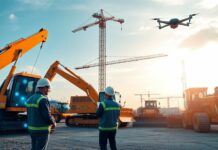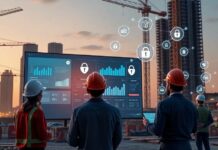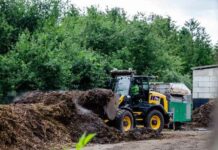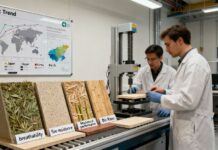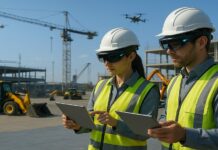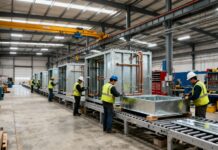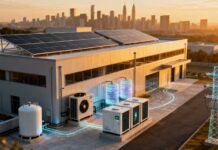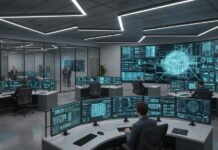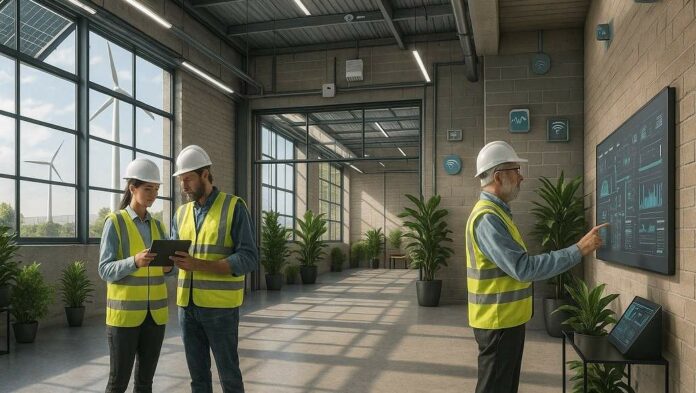The industrial market is under pressure to modernise its operations while also dealing with environmental problems.┬Ā Adding smart technology to ancient factories, warehouses, and processing plants is a practical way to improve efficiency, keep costs down, and reach sustainability goals.┬Ā The technique retrofits existing buildings with straightforward, hands-on solutions, allowing businesses to save money, streamline operations, and meet current environmental criteria without starting from scratch.┬Ā Retrofitting is a way for businesses to stay competitive in a market that is always changing.┬Ā Businesses can get a lot of economic and environmental benefits by making simple, people-centered changes without losing a beat.
┬ĀA New Time for Old Buildings
Industrial buildings that were built a long time ago were meant to last a long time and be easy to make in large quantities. They weren’t meant to save energy or be changed to meet new needs.┬Ā In most countries, these plants use about 40% of the electricity, which raises costs and pollution.┬Ā Building new facilities from the start is usually quite expensive and disruptive because energy prices are going up and environmental rules are getting stricter.┬Ā Retrofitting is a better option than modernising these buildings since it improves what is already there without having to do a lot of hefty work.
Retrofitting is the process of putting in new things that make a building better, like energy-efficient lighting, good insulation, and new heating and cooling systems.┬Ā They can be created often while the structure is still in use, thus production doesn’t stop.┬Ā The changes use less energy, produce less pollution, and make the workplace more comfortable and pleasant for the workers.┬Ā Better insulation, for instance, keeps buildings warmer in the winter and cooler in the summer, which saves money on energy bills all year long.┬Ā Retrofitting also protects buildings that are already there, which means less new materials are needed and less waste is created.┬Ā This strategy helps organisations update their facilities without spending a lot of money and in a way that is good for the environment.
Changing Energy Use
Retrofitting changes how industrial operations use energy, fixing the problems with old systems that cost too much and are not environmentally friendly.┬Ā Fossil-fuel-based electricity is typically used in older buildings, which means they have high bills and a big carbon footprint.┬Ā Retrofitting lets businesses consume less energy and move to greener sources while keeping their operations running smoothly. This is important for industries like manufacturing or processing, where downtime may be costly.
Adding solar panels or wind turbines to your home or business decreases your need for fossil fuels.┬Ā Employees can learn how to use energy more efficiently by scheduling high-power tasks at times when renewable sources are at their best. For example, heavy machinery can be used during sunny days to harness solar power.┬Ā This kind of manual planning keeps things running smoothly and saves money.┬Ā Workers also keep an eye on energy meters to see how much energy is being used and find ways to save money, even down to the last watt.┬Ā These kinds of steps help keep prices stable, protect against fluctuating energy rates, and have a smaller impact on the environment.┬Ā Retrofitting helps to make the building’s environment friendly and save money, which meets the needs of businesses and follows the environmental regulations.
Digital Intelligence: The Brain of Smart Buildings
Smart buildings don’t need the latest technology to work well; people and behind-the-scenes processes can get the job done.┬Ā Retrofitting uses maintenance done by workers rather than relying on complicated digital gear to keep facilities running well.┬Ā Regular checks on windows, insulation, or equipment can find problems like leaks in the air or wear and tear before they get worse.┬Ā This human touch keeps everything running smoothly without the need for computers.
Staff can take charge of how the building works by changing the lighting, heating, or ventilation to fit what has to be done each day.┬Ā Turning off lights in rooms that aren’t being used or turning down the heat on summer days can make a big difference, for example.┬Ā These steps can assist in minimizing energy use by 15ŌĆō30% compared to before the retrofit, and they can also keep equipment from breaking down unexpectedly and make it last longer.┬Ā Also, safety is better since workers find and fix problems like faulty wiring or dirty air during frequent inspections.┬Ā Because storms and heat waves are happening more often because of climate change, this people-based strategy makes facilities reliable and is a strong alternative to technology solutions.
Value for the economy and the environment
Retrofitting has both direct financial and environmental benefits.┬Ā Small changes, like adding insulation or energy-efficient lighting, can save your money, and they will pay for themselves in three years.┬Ā Bigger renovations, like installing new heating systems, cost more up front but save money in the long run because they work better.┬Ā These kinds of modifications also help businesses satisfy environmental standards, make their buildings more sustainable, and raise property prices, which makes their buildings more appealing in competitive real estate markets.
It has a tremendous effect on the environment.┬Ā Smart buildings can cut greenhouse gas emissions by 25ŌĆō40% by using less energy and using renewable sources.┬Ā This is significant because companies want to reach global net-zero levels, and cutting emissions is a top aim.┬Ā Using old structures for new use keeps the environment from suffering from new construction, like getting raw materials or making trash.┬Ā Retrofitting saves firms money right away and makes them leaders in sustainability. It also keeps them ahead of what customers want, what investors anticipate, and what regulators require, all while making the future more secure.
Looking Ahead: The Next Big Thing in Industrial Innovation
Companies looking to stay competitive are quickly turning to retrofitting industrial buildings to make them smart buildings.┬Ā Retrofitting will become even more possible as energy-saving methods get better and renewable energy technologies become more widely available.┬Ā Using retrofitting can help businesses become more efficient and environmentally friendly without having to rely on advanced technology. This makes it possible in many different fields.
For corporate leaders, retrofitting industrial buildings is a way to show that they care about the planet, save money, and make things run more smoothly.┬Ā Businesses may fulfills today’s needs and be ready for tomorrow by updating old facilities with simple, human-powered solutions.┬Ā Retrofitting makes outdated factories into lean, green buildings that help businesses stay strong in a market that is always changing.┬Ā It’s an investment that looks to the future, encourages new ideas, and changes the way factories work.









